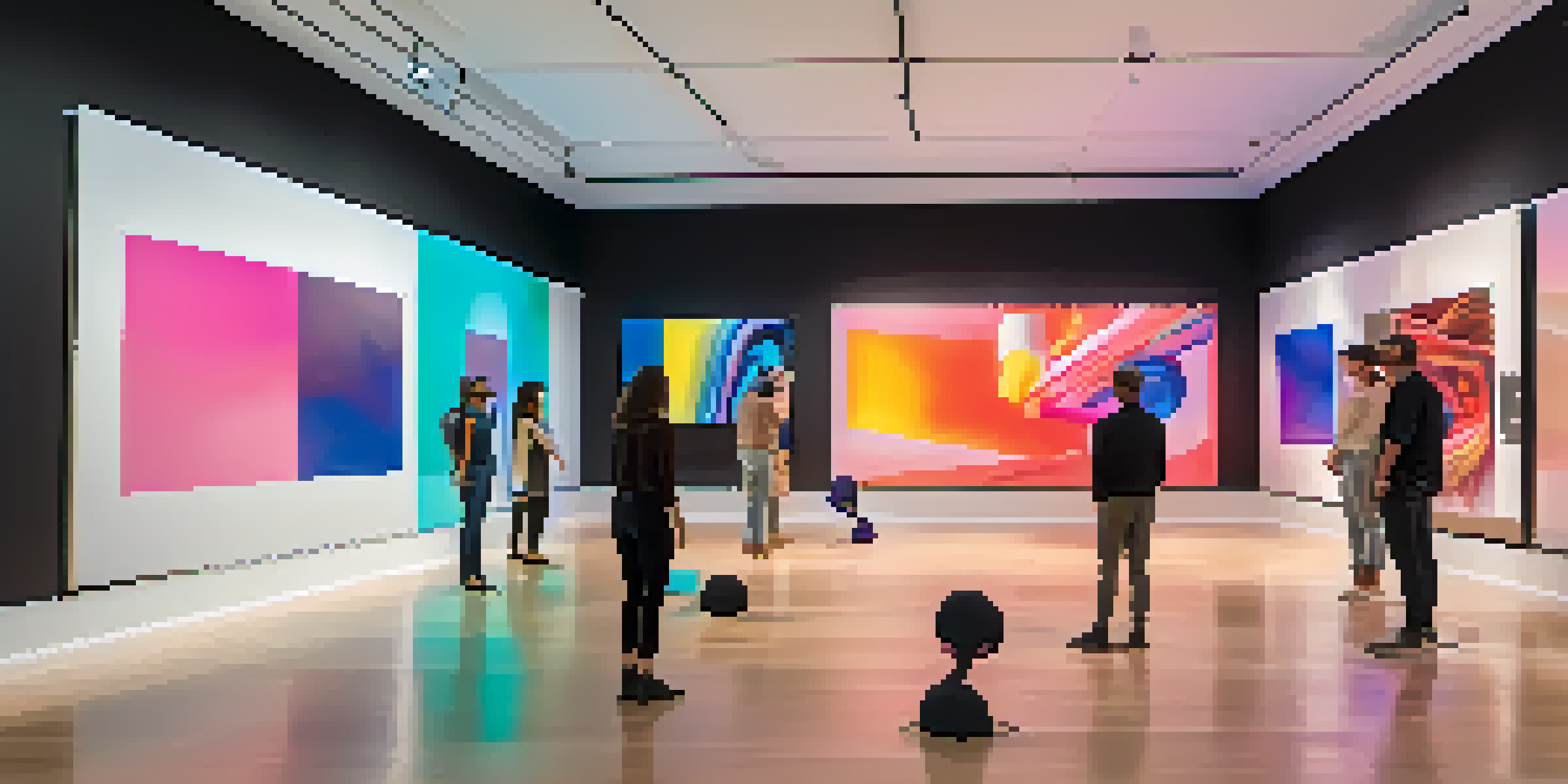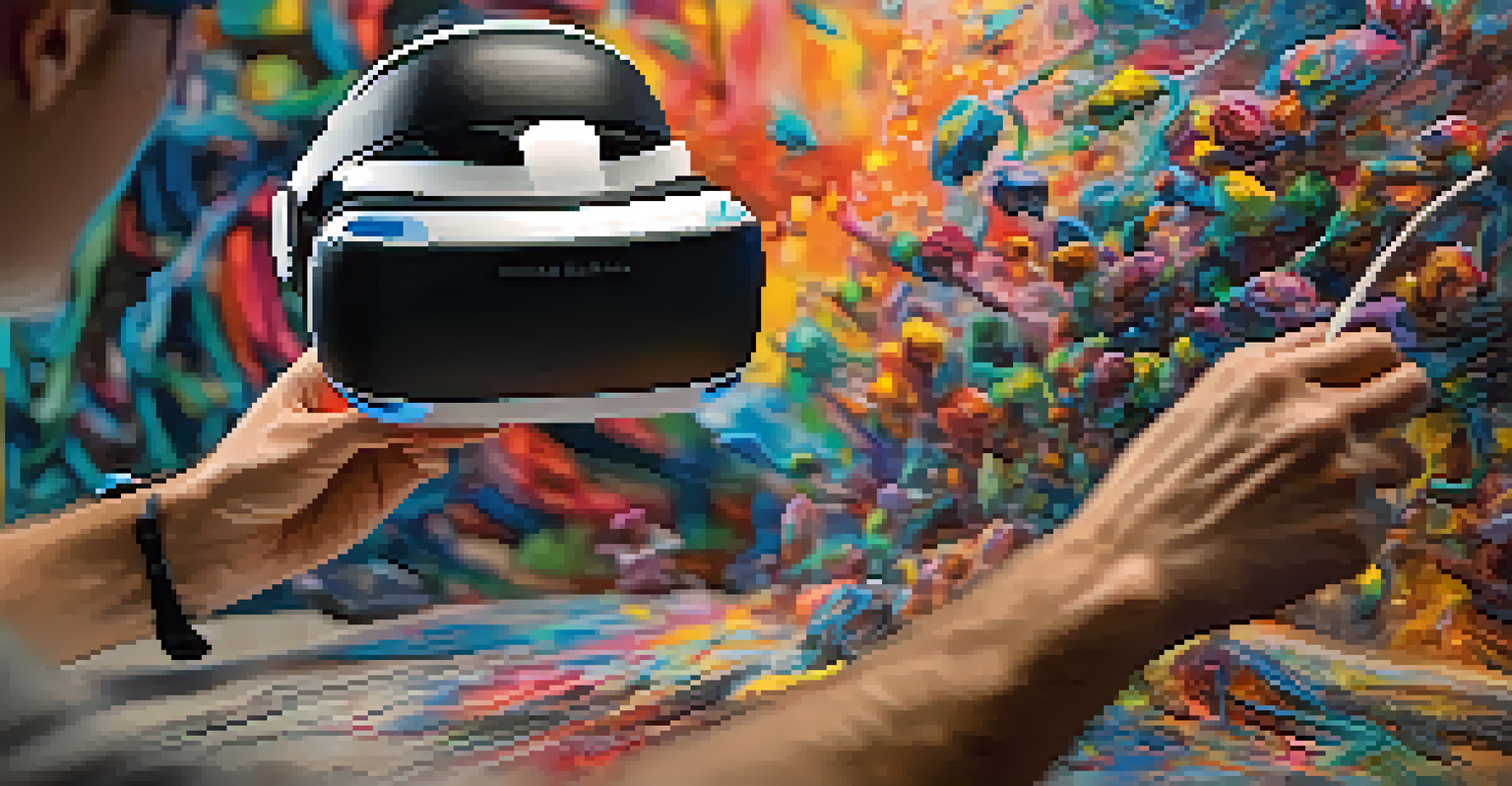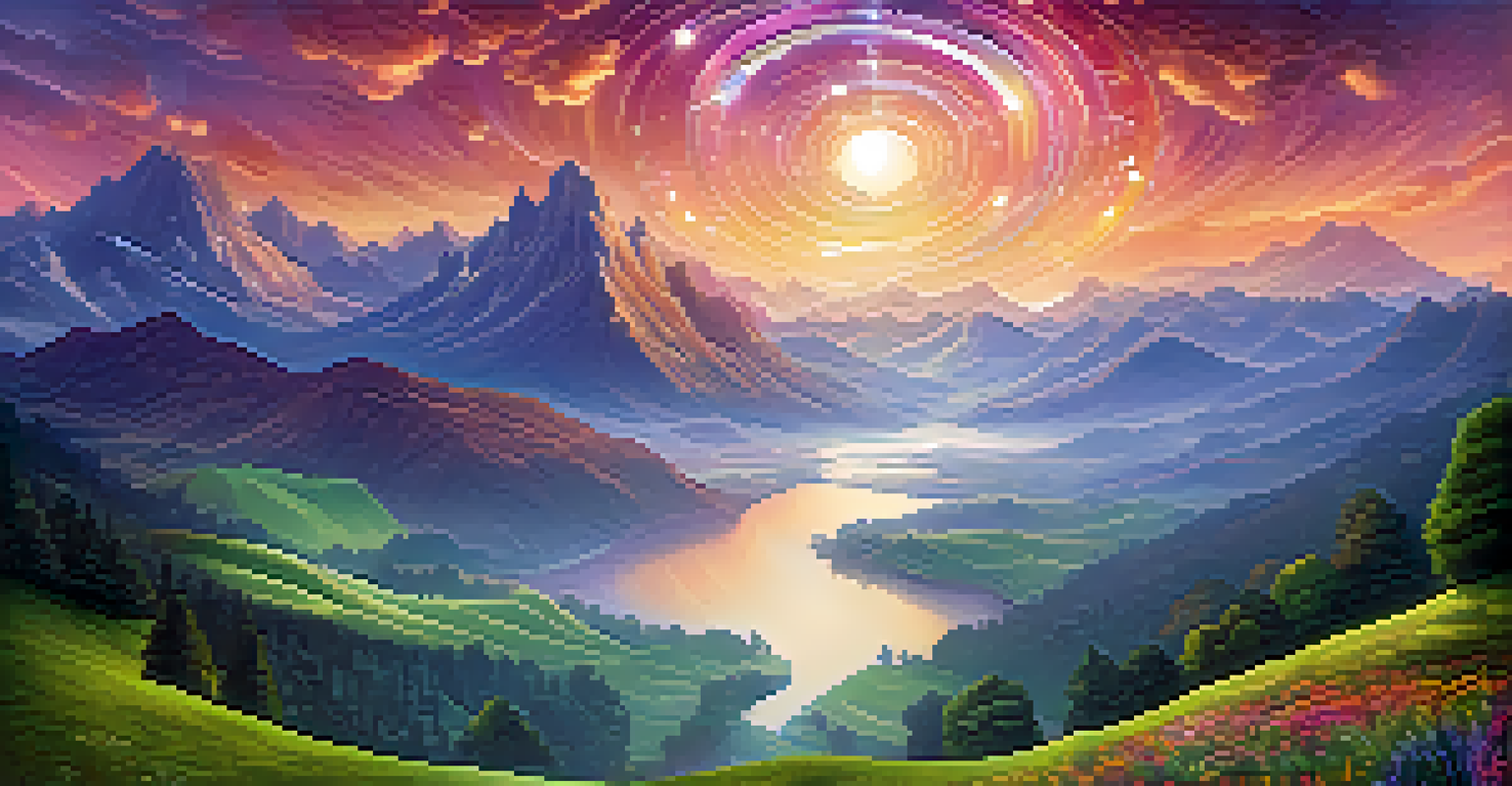Virtual Reality: A New Canvas for Contemporary Artists

Understanding Virtual Reality in the Art World
Virtual reality (VR) is more than just a tech trend; it has become a transformative medium for artists. By immersing viewers in a fully interactive environment, VR invites them to experience art in ways that traditional forms cannot achieve. Imagine stepping inside a painting, where the brushstrokes come alive and the colors envelop you—this is what makes VR a unique canvas for creativity.
Virtual reality is not a new medium; it’s a new way of thinking about art and how we engage with it.
Artists can create three-dimensional spaces that challenge the boundaries of perception, allowing for a more profound emotional connection. Unlike a static painting or sculpture, VR can tell a story that unfolds as the viewer moves through it. This dynamic interaction opens up endless possibilities for artistic expression, making it an exciting frontier for contemporary creators.
Moreover, as technology continues to evolve, so does the potential for VR in art. From virtual galleries to interactive installations, artists are exploring new techniques and tools to engage audiences. This innovative approach not only redefines how art is created but also how it is experienced, making it a vital topic in today’s artistic landscape.
Breaking Down Barriers: Accessibility and Inclusion
One of the most significant advantages of virtual reality is its potential to democratize art. With VR, artists can reach a global audience without the constraints of physical space, allowing more people to access and engage with their work. This is especially important for those who may not have the opportunity to visit galleries or museums due to geographical or physical limitations.

Additionally, VR can foster inclusive artistic expression by enabling artists from diverse backgrounds to share their narratives. By creating immersive environments that reflect unique cultural experiences, VR allows for a richer tapestry of voices in the art world. This inclusivity not only broadens the audience’s perspective but also enriches the overall artistic landscape.
VR Transforms Artistic Expression
Virtual reality enables artists to create immersive environments that redefine how art is experienced and interacted with.
As more artists and organizations embrace VR, we’re likely to see a shift in how art is perceived and valued. This technology encourages collaboration and innovation, creating a space where different cultures and ideas can intersect. Ultimately, VR is breaking down barriers, making art more accessible and diverse.
The Creative Process: How Artists Approach VR
Creating art in virtual reality requires a unique set of skills and a different mindset. Artists often begin by reimagining their creative process—what works in a physical medium may not translate directly to a VR environment. This shift encourages experimentation, as creators learn to navigate the tools and technologies that allow them to build immersive experiences.
Art must be an integral part of the technological revolution, allowing us to experience the world differently.
For many artists, the first step in their VR journey involves conceptualizing the experience they want to create. This could mean designing an environment that evokes specific emotions or crafting interactive elements that engage the viewer. Much like a director creating a film, artists must think about how the audience will move through and interact with their work.
Furthermore, collaboration is often key in the VR creative process. Many artists partner with technologists and developers to bring their visions to life, allowing for a fusion of artistic and technical expertise. This teamwork not only enhances the quality of the final piece but also contributes to a more vibrant artistic community.
Examples of Innovative VR Art Projects
Several contemporary artists have already begun to explore the potential of virtual reality, creating groundbreaking projects that push the boundaries of traditional art. For instance, artist Marina Abramović used VR to immerse participants in a deeply personal experience, allowing them to connect with her work on a profoundly emotional level. Such projects highlight the unique ability of VR to foster intimate connections between the artist and the audience.
Another example is the work of Olafur Eliasson, who creates immersive environments that challenge viewers' perceptions of space and light. His VR installations invite participants to explore their surroundings in new ways, encouraging a sense of wonder and curiosity. These innovative approaches demonstrate how VR can transform not just what we see, but how we feel.
Accessibility Through Virtual Reality
VR democratizes art by allowing diverse audiences to engage with artworks from anywhere, overcoming geographical and physical barriers.
These projects are just the tip of the iceberg, as more artists experiment with VR technology. As the medium gains popularity, we can expect to see an influx of creative ideas that redefine art as we know it. The possibilities are endless, and the future of VR art is bright.
The Role of Technology in Shaping Artistic Expression
Technology plays a crucial role in how artists create and share their work in the realm of virtual reality. Advances in software and hardware are not only making VR more accessible but also enhancing its creative potential. For example, tools like Oculus Medium allow artists to sculpt in a 3D space, offering a tactile experience that traditional sculpting cannot match.
Moreover, the integration of artificial intelligence and machine learning is opening up new avenues for artistic exploration. These technologies can assist artists in generating new forms, analyzing patterns, and even creating adaptive art that changes based on viewer interactions. This synergy between art and technology is paving the way for innovative creations that challenge our understanding of both.
As VR technology continues to evolve, artists are gaining access to more sophisticated tools that can augment their creative expression. From high-fidelity graphics to realistic simulations, the possibilities for artistic innovation are virtually limitless. This ongoing relationship between technology and art will undoubtedly shape the future of how we create and experience art.
Challenges Faced by VR Artists
Despite the exciting possibilities of virtual reality, artists also face unique challenges in this medium. One significant hurdle is the steep learning curve associated with VR technologies. Many artists must invest time and resources into mastering new software and hardware, which can be daunting for those used to traditional methods.
Additionally, the financial aspect of creating VR art can be a barrier. High-quality VR equipment and software often come with a hefty price tag, making it less accessible for emerging artists. This financial strain can discourage talented individuals from exploring this innovative medium, potentially stifling creativity in the field.
Challenges for VR Artists
Despite its potential, artists face hurdles such as steep learning curves and high costs associated with VR technology.
Moreover, as VR art becomes more mainstream, artists must navigate issues related to copyright and ownership in digital spaces. Protecting their work in a virtual environment presents new challenges that require careful consideration. Addressing these challenges is essential for fostering a sustainable and thriving community of VR artists.
The Future of Art in Virtual Reality
As we look to the future, virtual reality is poised to play a pivotal role in the evolution of contemporary art. With technology advancing at a rapid pace, we can expect to see even more innovative artistic expressions that blend the physical and digital worlds. This fusion will likely inspire a new generation of artists to explore VR as a legitimate medium, further enriching the art landscape.
Furthermore, the potential for VR to facilitate new forms of collaboration is exciting. Artists across disciplines—visual artists, musicians, performers—can come together to create multi-sensory experiences that transcend traditional boundaries. This collaborative spirit will foster a vibrant community dedicated to pushing the limits of creativity.

Ultimately, the future of art in virtual reality is bright and full of potential. As artists continue to explore this medium, they will not only redefine their own practices but also transform how audiences engage with art. The journey of VR art is just beginning, and it promises to unveil new dimensions of creativity.